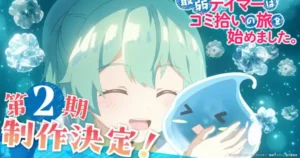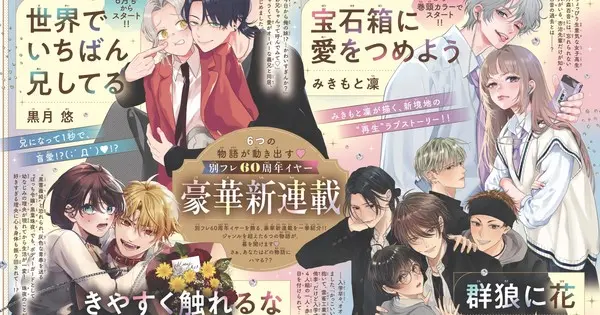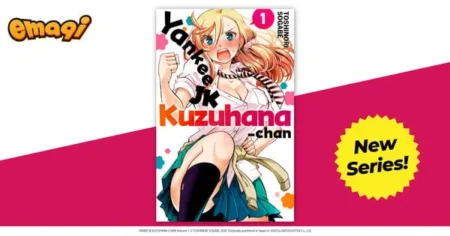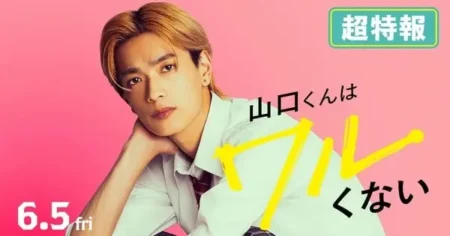Rin Mikimoto, the celebrated manga artist behind popular series like “Lightning and Romance” and “Kiss Me at the Stroke of Midnight,” has launched a brand new manga series titled “Hōsekibako ni Ai wo Tsumeyō” (宝石箱に愛を詰めよう), which translates to “Let’s Put Love in a Jewelry Box”. This delightful announcement has fans eagerly anticipating another heartwarming and captivating story from the beloved shojo manga creator.
Who is Rin Mikimoto?
Before diving into the details of her latest work, let’s appreciate the artist herself. Rin Mikimoto is a Japanese manga artist born on May 18th. She debuted after receiving an honorable mention in the 18th BF Rookie Manga Award for her work “SHE’S ALL THAT”. Mikimoto is best known for her shojo manga, which often revolves around themes of romance, school life, and coming-of-age. Her works are characterized by expressive characters, engaging storylines, and a keen understanding of the emotions that resonate with her audience. Some of her most notable works include:
- Kinkyori Renai (Close Range Love): A popular series that explores the forbidden romance between a teacher and a student.
- Gozen 0-ji, Kiss Shi ni Kite yo (Kiss Me at the Stroke of Midnight): A Cinderella story about a seemingly ordinary high school girl who falls in love with a famous actor.
- Kyou no Kira-kun: A touching story about two lonely individuals who find solace and connection in each other.
- Lightning and Romance (Inazuma to Romance): A more recent series that follows a high school girl who develops feelings for her mysterious, older classmate.
Mikimoto’s ability to create relatable characters and weave compelling narratives has earned her a dedicated following both in Japan and internationally. Her manga often explores themes of love, friendship, and self-discovery, resonating with readers of all ages.
“Hōsekibako ni Ai wo Tsumeyō”: What We Know So Far
The title, “Let’s Put Love in a Jewelry Box,” immediately sparks curiosity and hints at the themes that the manga will explore. A jewelry box is often associated with precious memories, cherished keepsakes, and things of great personal value. The title suggests that the story will delve into the various facets of love, carefully collecting and preserving them like precious jewels.
- Genre: Based on Mikimoto’s previous works and the series’ presence in Bessatsu Friend magazine, “Hōsekibako ni Ai wo Tsumeyō” will likely fall into the shojo genre, targeting a young female audience. Expect a focus on romance, relationships, and personal growth.
- Themes: Given the title, we can anticipate themes of love, relationships, memories, and the preciousness of heartfelt connections. The “jewelry box” concept might represent the characters’ emotional lives, where they carefully store and treasure their experiences with love.
- Storyline (Speculation): While official plot details are still scarce, the title suggests a narrative that explores different kinds of love – romantic love, familial love, friendship, or even self-love. The story might revolve around a character who is learning to understand and appreciate the various forms of love in their life, collecting experiences and memories like precious gems in a jewelry box.
Where to Read
“Hōsekibako ni Ai wo Tsumeyō” is currently serialized in Bessatsu Friend, a monthly Japanese shojo manga magazine published by Kodansha.
“Lightning and Romance”: A Continuing Success
While fans eagerly await Mikimoto’s new series, her ongoing manga, “Lightning and Romance,” continues to captivate readers. The series follows Sumire, a high school student who finds herself drawn to her enigmatic classmate, Reo, who is rumored to be a member of the yakuza and is also older than the other students. “Lightning and Romance” explores themes of:
- Age Gap Romance: The unconventional relationship between Sumire and Reo, who is significantly older and has a more complex past, creates unique challenges and opportunities for their romance.
- Overcoming Prejudice: Sumire and Reo must confront societal prejudices and overcome their own insecurities to be together.
- Self-Discovery: Both characters undergo significant personal growth as they navigate their relationship and learn more about themselves.
Other Notable Works by Rin Mikimoto
To further appreciate Rin Mikimoto’s talent and artistic style, here’s a brief overview of some of her other notable works:
- Kinkyori Renai (Close Range Love): This series follows the relationship between Yuni Kururugi, a brilliant but emotionally stunted high school student, and Haruka Sakurai, her handsome and charismatic English teacher.
- Themes: Forbidden love, teacher-student relationship, emotional growth, overcoming personal limitations.
- Gozen 0-ji, Kiss Shi ni Kite yo (Kiss Me at the Stroke of Midnight): This series tells the story of Hinana Hanazawa, a serious and hardworking high school student who dreams of a fairytale romance. Her life takes an unexpected turn when she meets Kaede Ayase, a popular actor who is known for his carefree and playful personality.
- Themes: Cinderella story, celebrity romance, overcoming social barriers, pursuing dreams.
- Kare wa Idol (He’s an Idol): A story about a normal girl dating an idol.
- Kyou no Kira-kun: A poignant and moving story about two high school students, Kira and Nino, who are both struggling with personal challenges. Kira is a troubled young man with a dark secret, while Nino is a shy and introverted girl who is often bullied by her classmates.
- Themes: Illness, social isolation, finding connection, accepting mortality.
What Makes Rin Mikimoto’s Work So Appealing?
Rin Mikimoto’s manga resonates with readers for several reasons:
- Relatable Characters: Mikimoto’s characters are often flawed and relatable, making it easy for readers to connect with their struggles and triumphs.
- Emotional Depth: Her stories explore complex emotions and relationships with sensitivity and nuance, creating a powerful and immersive reading experience.
- Engaging Storylines: Mikimoto is a master storyteller, crafting narratives that are both entertaining and thought-provoking.
- Artistic Style: Her art style is characterized by expressive character designs, dynamic panel layouts, and a keen attention to detail, enhancing the emotional impact of her stories.
The Enduring Appeal of Shojo Manga
Rin Mikimoto’s success is a testament to the enduring appeal of shojo manga. This genre, which is primarily aimed at young female readers, often explores themes of love, friendship, and self-discovery in a way that is both entertaining and empowering. Shojo manga can provide readers with:
- Relatable Role Models: Shojo manga often features strong and independent female characters who navigate complex social situations and pursue their dreams.
- Emotional Catharsis: By exploring a wide range of emotions, shojo manga can provide readers with an outlet for their own feelings and help them to better understand themselves and others.
- Positive Messages: Shojo manga often promotes positive values such as kindness, compassion, and the importance of following one’s heart.
Final Thoughts
Rin Mikimoto’s new manga, “Hōsekibako ni Ai wo Tsumeyō,” is highly anticipated by fans eager for another dose of heartwarming romance and relatable characters. With her established talent for crafting compelling stories and exploring the complexities of human relationships, Mikimoto is sure to deliver another captivating series that will resonate with readers of all ages. As we await further details about the plot and characters, one thing is certain: “Hōsekibako ni Ai wo Tsumeyō” promises to be a beautiful and heartfelt exploration of love in all its forms, carefully collected and treasured like precious jewels in a jewelry box.









